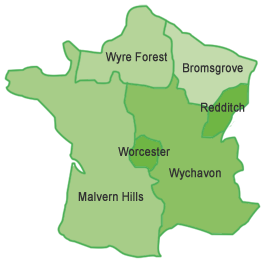|
Framed from the North by Frankly Service station and to the West by the Malvernís stately hills Ė Worcestershire is more than simply a county of fast food and febrile reverie. From Redditchís concrete flecked 1970ís urban conurbations to skeletal Witley Courtís burned out gothic grandeur, from Kidderminsterís post industrial skyline to the Vale of Eveshamís bucolic orchards the Pear tree county is one of contrasting and challenging landscape.
|
| |
|
The English Civil Wars
Dig a little deeper however and you will find that for all itís rustic demeanour Worcestershire has, on more than one occasion been a site of civil unrest. Nestling in the shadows of the Malvern Hills, Castlemorton Common achieved notoriety in 1992 when it found itself inadvertently hosting a Ďtribal gatheringí, complete with travellers and their idiosyncratic sound systems, free range dogs and which two years later led to the introduction of the Criminal Justice and Public Order Act. However, if one travels back to the 17th century it is possible to find even greater evidence of political unrest since the sites of both the opening skirmish and closing battle of the English Civil Wars can be located at Powick Bridge and Worcester respectively. Borsch, Bosch, under the cosh!
|
| |
|
Part fact, part fiction and both comedy and tragedy by turn, the Barbed Wyre forgoes rotoractive Young Farmers and porcelain Elgarís, eschews the Sauce and heads for the countyís heartbeat; achingly bland villages bordering sleepy market towns with their ketamine kidz, blissed out on scrumpy and dreaming of Gloucesterís neon docks all the while waiting outside a shop thatís always closed for a bus that never arrives.
Beyond them smoke rises from stubborn charcoaled fields, their modern day gleaners silhouetted in the haze of an illicit summerís morn, more likely to hail from Krakow or Warszawa than Stoulton, Bredon or Hanley Swan.
More than simply a Stourport-on-Severn State of Mind, this could be anywhere.
|
| |
|
The Barbed Wyre creates a platform from which, through text, advertising and visual art, it becomes possible to build and explore the myths Ė both real and re-imagined, the histories and folklore of this seemingly most rural of counties, and, in the process reposition them within a contemporary art practice.
|
| |
.jpg)


